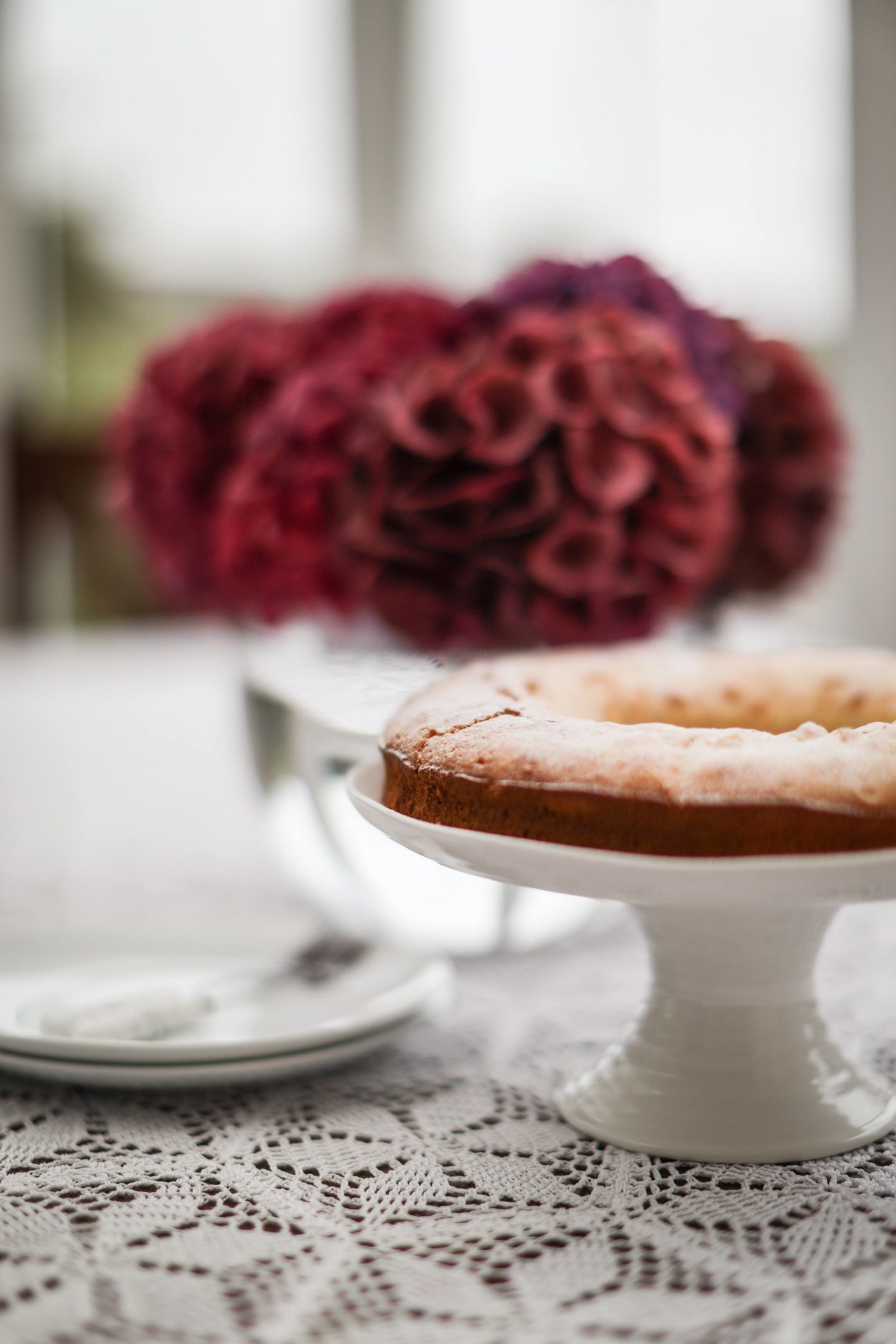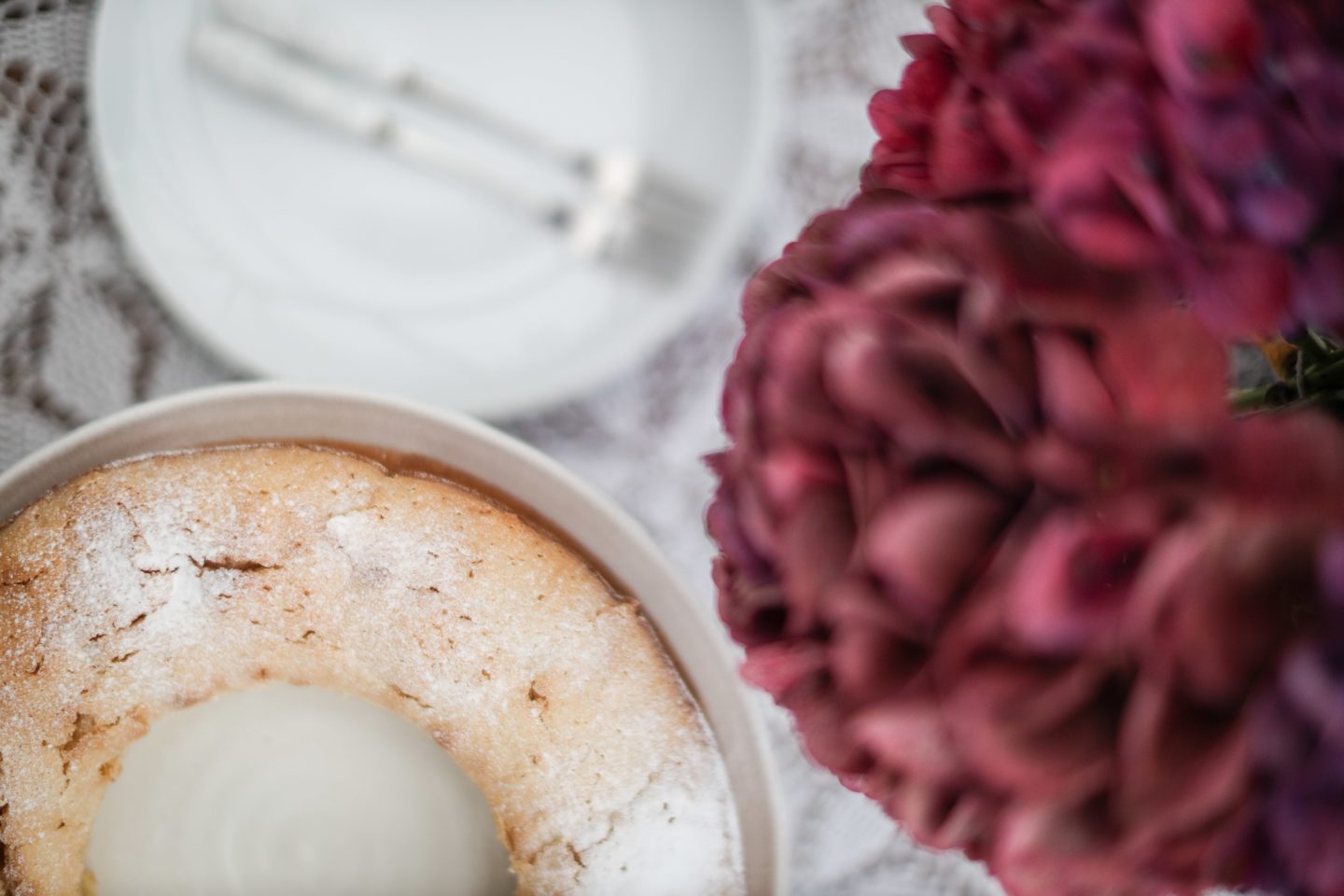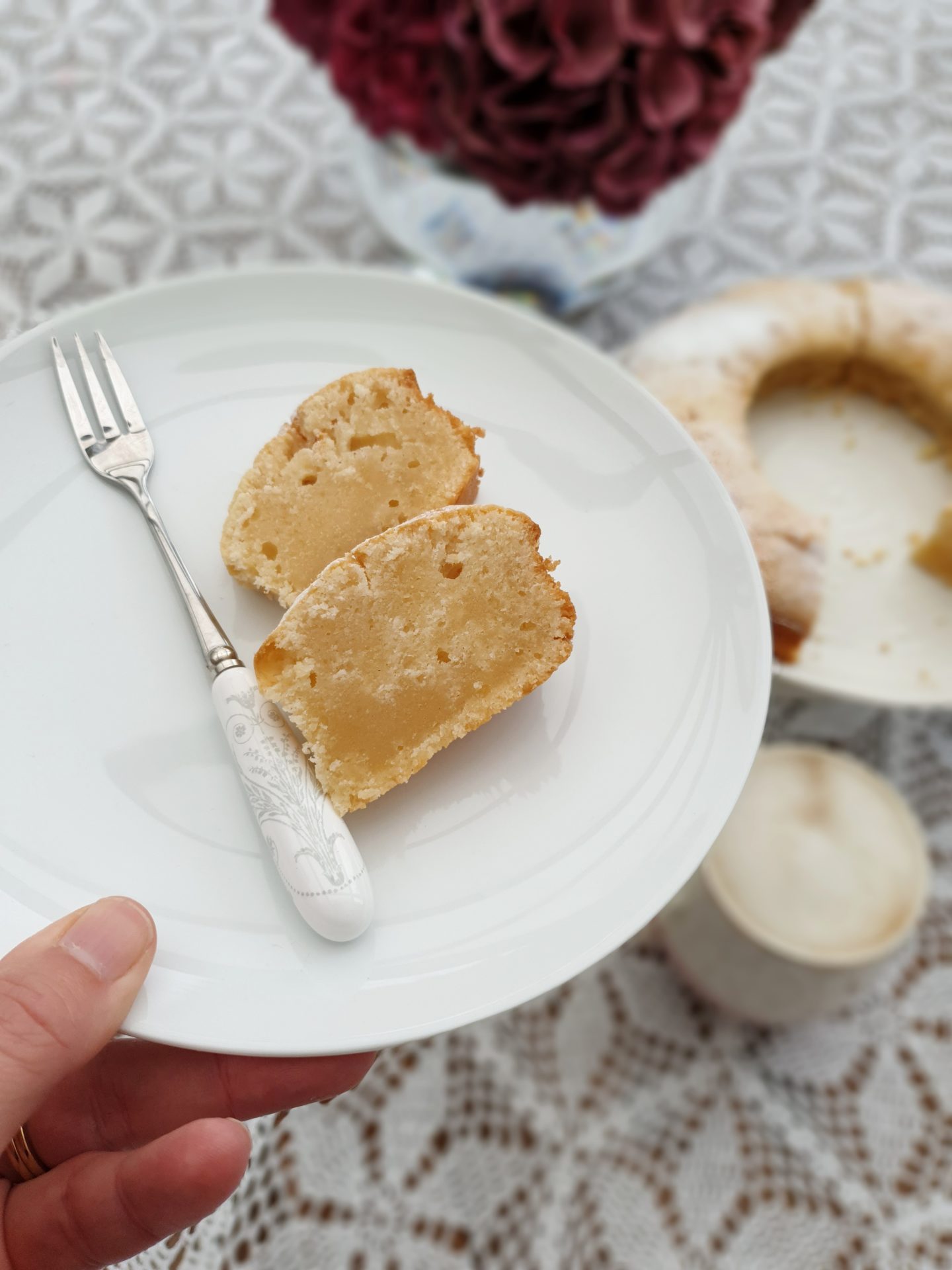On Sunday I had a friend coming so I got started fairly early that morning. I almost ditched the entire idea in favour of a banana loaf (now so familiar to me I barely need to reference the recipe) because the separation of eggs felt altogether too fussy. However, I pushed myself out of my baking comfort zone and set to work. It actually wasn’t that tricky – the whisking of egg whites was the most complex part, basically everything else is just thrown in the bowl – but, although it tasted fine, I did find some of the cake was under-cooked. My friend and I both had seconds so it couldn’t have been that awful. When I mentioned it on Instagram I had a DM to say that the yoghurt really moisturises the batter, so a lower temperature for longer would probably help. I’m not sure if I’m in a hurry to try it again but when I do I’ll keep this in mind because, actually, this is exactly what I do with my banana loaf – makes sense, given mashed bananas are also a moist ingredient.
Anyway, if you too fancy a slice (or four) of yoghurt cake with your coffee, I’ve shared Nigella’s recipe at the bottom of this post. If you try it out, please let me know how it goes, and whether or not you adjusted the recipe/baking time. Once perfected, it’s certainly a pretty cake to have on display for guests*.
*guests outdoors, or for when Covid restrictions don’t apply
Recipe
150g plain yoghurt
150ml vegetable oil, plus some for greasing
3 eggs
250g caster sugar
2 capfuls vanilla extract
zest 1/2 unwaxed lemon
175g plain flour
75g cornflour
1 teaspoon icing sugar, to serve
1 x 22cm savarin or ring mould (or 22/23cm spingform cake tin)
Method
Preheat the oven to 180C/gas mark 4, and grease your ring mould (or springform tin); you can use vegetable oil for this or a special baking tray.
Separate the eggs and put the whites in one bowl and the yolks in another. Whisk the whites until you have firm peaks, then set aside while you get on with the rest of the cake.
Scrape the yoghurt out of its pot and on to the egg yolks (I made the mistake of flattening my egg whites by putting them in the wrong bowl inadvertently), then use the empty yoghurt pot to measure out your other ingredients (I wasn’t brave enough for this and stuck to the ingredient listing above). So you could add 2 pots (just) of sugar and whisk with the egg yolks and yoghurt until airy and light.
Now fill your yoghurt pot up with vegetable oil and, beating all the while, slowly add this to the egg yolk mixture. Then beat in 2 capfuls of vanilla extract and the zest of half a lemon (I left the lemon out as I forgot it).
Still beating, add 2 potfuls of flour followed by 1 potful of cornflour, then scrape down and fold in with a spatula. Now, with a large spoon, dollop in the whisked egg whites, and fold them in with the spatula.
Fill the prepared ring mould with the smooth, soft batter – it will come right to the top – and bake in the oven for 30-35 minutes; when cooked, the sides will be coming away at the edges and a cake tester will come out clean.
Remove it from the oven to a wire rack, letting the cake sit in the tin for 10 minutes before turning it out.
Once cooled (although like all cakes, it’s lovely warm), transfer it to a serving plate or stand and dust with icing sugar. Traditionally, this cake would be placed on the plate with the smooth side uppermost, but Nigella likes it turned back up the way it was baked, with its rustic cracks and uneven surface visible. And who are we to argue with Nigella?




